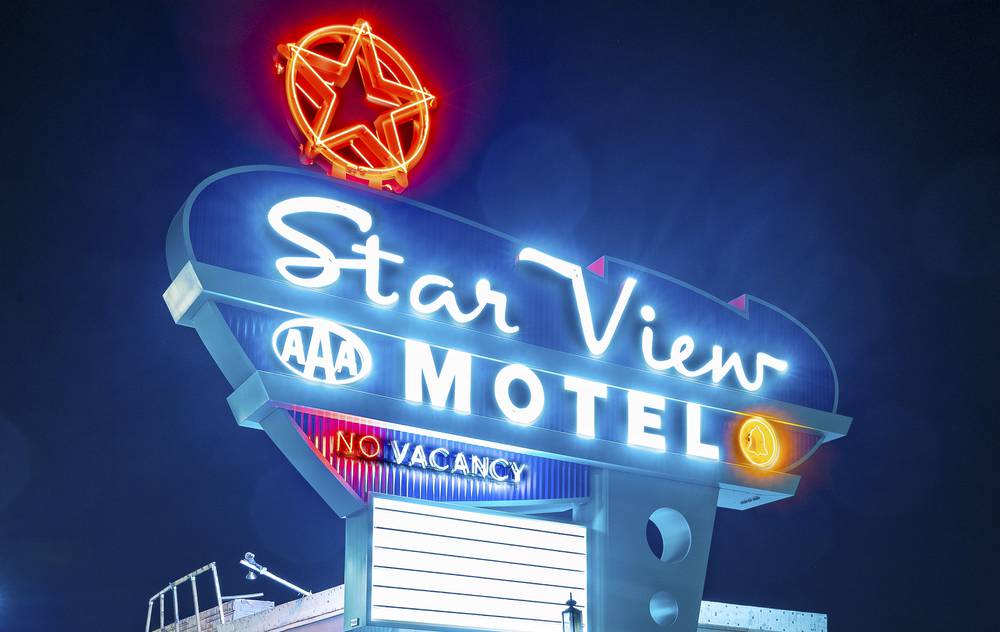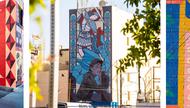Years ago, when the rehabilitation of Las Vegas’ city core began in earnest, even the most optimistic of civic boosters would tell you that a lot of hands, both public and private, needed to join together to make Downtown happen. That sentiment holds true now more than ever: For every success like Main Street, where years of City-sponsored infrastructure work and small business investment are nicely coalescing, there are other areas of Downtown in need of compounded improvements: new infrastructure upgrades, private investment, improved streetscapes, green space, protections for historic buildings and more.
Downtown Rising
Enter Project Enchilada, and Brad Jerbic. Project Enchilada is an initiative by the City of Las Vegas and a number of private stakeholders—most notably DTP Companies, formerly Downtown Project, which owns a number of shuttered Fremont Street motels—to revitalize Downtown’s challenged areas. And Jerbic, the former, longtime City Attorney for Las Vegas, is Project Enchilada’s coordinator, a position for which he receives no pay. His compensation is personal: His family moved to town in 1962, when he was 4 years old. “I spent my first two nights in Las Vegas at a motel on Sixth Street,” Jerbic says. “I grew up seeing a vibrant, thriving Downtown. To think of that coming back is enormously pleasing.”
Jerbic jumped into the project as a way to process the tragedy of the October 1 shootings, in which he lost a good friend. “I thought it would be fun to get involved in a project that looked at everything—not just a piece or an individual development, like a Neonopolis, but something that would actually be the whole enchilada.” A giant swath of Downtown was marked for improvement—east from I-15 to Eastern Avenue and north from Charleston Boulevard to US 95, plus the Arts District and the Huntridge neighborhood. “We’re not going to have a healthy and vibrant Downtown unless we start putting a lot of pieces together,” Jerbic says.
The first phase of the project is well underway. It includes the rescue and rehabilitation of the historic Huntridge Theater; developer J Dapper, who recently revitalized the adjacent Huntridge Shopping Center, should close escrow on the 77-year-old property on December 28, Jerbic says. (Meanwhile, Dapper continues to work on Huntridge Center, which is getting a new grocery store, and he’s refining plans to transform nearby Huntridge Circle Park into a sculpture garden and kids’ play area.) The other aspect of Phase 1 is a refresh of Fremont Street from Las Vegas Boulevard to 14th Street, which includes a blanket of deciduous shade trees and the surprising return of a design element plucked from Downtown’s past.
“When we started, we brought in some people from out of state to advise us,” Jerbic says. One of them was a Philadelphia-based architecture firm called Civic Visions, whose principals, a married couple—“she’s an architect, he’s a cultural historian,” Jerbic notes—specialize in mid-century modern architecture. They showed Jerbic photos of ornate iron streetlights, installed along Fremont Street in 1929 and taken down in the mid-1940s. “I had never seen a picture of them before, knew nothing about them, but suddenly it became almost an obsession to try and re-create them,” Jerbic says. “We actually found one of the original poles in West Las Vegas, and the original headpiece in Hancock Park in LA. So we were able to send the dimensions—in fact, we sent the headpiece itself—to [a fabricator in] Pennsylvania.”
The first batch of re-created streetlights, lit with LED bulbs, was recently installed on Fremont Street, from Las Vegas Boulevard to Eighth Street. And while they might take a little getting used to—they’re built to be noticed, which most contemporary streetlights are not—they bring warmth and personality to the streetscape. Eventually, these streetlights and shade trees will cover 12 square blocks of Downtown, enhancing its walkability and filling in what Jerbic calls the area’s “missing teeth.”
“You’ll walk one block and there’s something, then you walk a little bit farther and there’s nothing. That’s a missing tooth,” Jerbic says. Empty lots, boarded-up motels and dead neon signs are anathema to Jerbic, unwanted vacancies in Downtown’s tentative smile. He likes the businesses of outer Fremont, particularly DTP’s Ferguson Motel revival, but they look lonely to him. “How do you fill in the gap between Sixth Street and 11th Street?,” he asks. “And then what do you do when you get past that?”
The answer to that question has produced some of the most striking elements of Downtown’s rebirth. Project Enchilada is restoring Fremont Street’s dilapidated neon motel signs to their original condition, using a $750,000 grant from the Las Vegas Centennial Commission. (It’s not taxpayer money; the funds come from a fee attached to the yearly registration of a limited-edition license plate.) The Star View Motel, Las Vegas Motel, Fremont Motel and Lucky Motel signs have all been repainted and re-lit, and they look like a million bucks. The Gables, Valley and Sky Ranch Motel signs will soon follow. And in a victory for neighborhood integrity, those signs will stay exactly where they are, even if their host properties become something else.
“All those colors that you see on those buildings … we would literally get out there in the middle of summer with a knife and razor blade and scrape the buildings, scrape the signs to get down to their original colors,” Jerbic says. “And once you get the original color, Dunn-Edwards makes a paint that is very long-lasting in our desert climate. … These are like the colors of cars that were coming out of Detroit in the 1950s. There’s a real connection here between what these buildings look like, what these signs look like and what was going on in America at that time. It’s just funky as all hell.”
Other cooks are tending to other ingredients of the Enchilada. The City of Las Vegas is taking care of updating the sidewalks, roads and utilities (see Page 18), while DTP Companies has been tasked with fixing up the exteriors of the boarded-up motels that it owns—new paint, landscaping, resurfaced parking lots and more. The eventual use of those properties remains a question mark.
“There isn’t a decided-upon plan for what the interiors will be,” Jerbic says. “But we have looked around the country at old motels that have actually reopened and they’re on fire; they’re very, very popular. But they could also do a rehab like the Fergusons: remove some walls and turn it into retail and restaurants.” And there’s another possibility: “We’ve had developers approach us that are interested in working with DTP to develop multifamily housing.”
Jerbic has other dream projects in mind: the Mayfair neighborhood, the tiny pink building at the corner of corner of Fremont and Eighth Streets (“it’s the oldest surviving gas station in Nevada”), those motel signs that have already been taken down (if there’s no property to match them to, they may go in the median of Las Vegas Boulevard, or in front of the so-called Llama Lot) and the possibility of a UNLV satellite campus in the neighborhood. And Jerbic will continue to see it through, even if it means filling an indeterminate number of his post-retirement days with pro bono urban planning work.
“I’ve got a new business card: One side says ‘Project Enchilada’ and the other ‘Brad Jerbic, Volunteer,” he says, laughing. “As far as the amount of hours I’m putting into this, pick the day and I’ll tell you how much. Sometimes I’ll be up all night long on the internet, finding some detail that I missed … and some days I’ll just be kicking back, scratching my belly, watching TV. But this is just a wildly cool time to be Downtown.”





